Related Research Articles

A sound film is a motion picture with synchronized sound, or sound technologically coupled to image, as opposed to a silent film. The first known public exhibition of projected sound films took place in Paris in 1900, but decades passed before sound motion pictures became commercially practical. Reliable synchronization was difficult to achieve with the early sound-on-disc systems, and amplification and recording quality were also inadequate. Innovations in sound-on-film led to the first commercial screening of short motion pictures using the technology, which took place in 1923. Before sound-on-film technology became viable, soundtracks for films was commonly played live with organs or pianos.

The kazoo is a musical instrument that adds a "buzzing" timbral quality to a player's voice when the player vocalizes into it. It is a type of mirliton, one of a class of instruments which modifies its player's voice by way of a vibrating membrane of goldbeater's skin or material with similar characteristics. A smaller version of the kazoo is known as a humazoo.
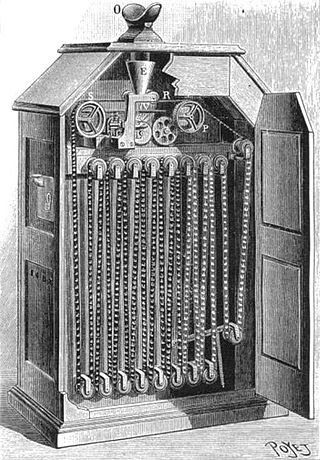
The Kinetoscope is an early motion picture exhibition device, designed for films to be viewed by one person at a time through a peephole viewer window. The Kinetoscope was not a movie projector, but it introduced the basic approach that would become the standard for all cinematic projection before the advent of video: it created the illusion of movement by conveying a strip of perforated film bearing sequential images over a light source with a high-speed shutter. First described in conceptual terms by U.S. inventor Thomas Edison in 1888, it was largely developed by his employee William Kennedy Laurie Dickson between 1889 and 1892. Dickson and his team at the Edison lab in New Jersey also devised the Kinetograph, an innovative motion picture camera with rapid intermittent, or stop-and-go, film movement, to photograph movies for in-house experiments and, eventually, commercial Kinetoscope presentations.
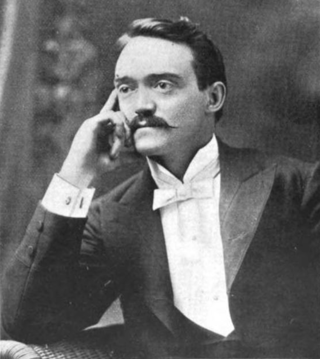
Charles Francis Jenkins was an American engineer who was a pioneer of early cinema and one of the inventors of television, though he used mechanical rather than electronic technologies. His businesses included Charles Jenkins Laboratories and Jenkins Television Corporation. Over 400 patents were issued to Jenkins, many for his inventions related to motion pictures and television.

Granville Tailer Woods was an American inventor who held more than 50 patents in the United States. He was the first African American mechanical and electrical engineer after the Civil War. Self-taught, he concentrated most of his work on trains and streetcars. One of his inventions is the Synchronous Multiplex Railway Telegraph, a variation of the induction telegraph that relied on ambient static electricity from existing telegraph lines to send messages between train stations and moving trains.
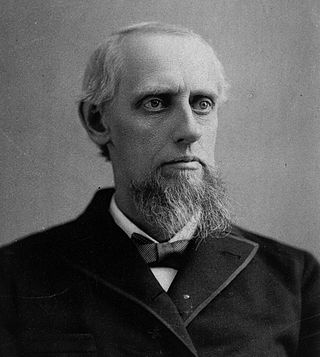
Amos Emerson Dolbear was an American physicist and inventor. Dolbear researched electrical spark conversion into sound waves and electrical impulses. He was a professor at University of Kentucky in Lexington from 1868 until 1874. In 1874 he became the chair of the physics department at Tufts University in Medford, Massachusetts. He is known for his 1882 invention of a system for transmitting telegraph signals without wires. In 1899 his patent for it was purchased in an unsuccessful attempt to interfere with Guglielmo Marconi's wireless telegraphy patents in the United States.
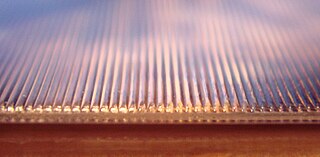
Lenticular printing is a technology in which lenticular lenses are used to produce printed images with an illusion of depth, or the ability to change or move as they are viewed from different angles.

Samuel Hopkins was an American inventor from Philadelphia, Pennsylvania, On July 31, 1790, he was granted the first U.S. patent, under the new U.S. patent statute just signed into law by President Washington on April 10, 1790. Hopkins had petitioned for a patent on an improvement "in the making of Pot ash and Pearl ash by a new Apparatus and Process."

Ronee Sue Blakley is an American actress, singer-songwriter, composer, producer and director.

Precursors of film are concepts and devices that have much in common with the later art and techniques of cinema.

Beulah Louise Henry, known as 'Lady Edison,' was an American inventor whose extensive contributions to consumer products and manufacturing technology solidified her legacy in the field. Born in Raleigh, North Carolina,
and later based in New York City, Henry was a pioneering figure who held 49 patents and developed over 110 inventions, significantly advancing technology while breaking gender barriers in her field.
Phonovision was a patented concept to create pre-recorded mechanically scanned television recordings on gramophone records. Attempts at developing Phonovision were undertaken in the late 1920s in London by its inventor, Scottish television pioneer John Logie Baird. The objective was not simply to record video, but to record it synchronously, as Baird intended playback from an inexpensive playback device, which he called a 'Phonovisor'. Baird stated that he had several records made of the sound of the vision signal but that the quality was poor. Unlike Baird's other experiments, there is no evidence of him having demonstrated playback of pictures, though he did play back the sound of the vision signal to audiences. Baird moved on leaving behind several discs in the hands of museums and favoured company members. Until 1982, this was the extent of knowledge regarding Phonovision.
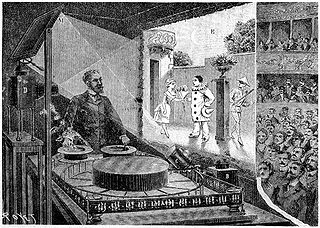
The Théâtre Optique is an animated moving picture system invented by Émile Reynaud and patented in 1888. From 28 October 1892 to March 1900 Reynaud gave over 12,800 shows to a total of over 500,000 visitors at the Musée Grévin in Paris. His Pantomimes Lumineuses series of animated films include Pauvre Pierrot and Autour d'une cabine. Reynaud's Théâtre Optique predated Auguste and Louis Lumière's first commercial, public screening of the cinematograph on 28 December 1895, which has long been seen as the birth of film.
Morton Maimon Mower was an American cardiologist specializing in electrophysiology and the co-inventor of the automatic implantable cardioverter defibrillator. He served in several professional capacities at Sinai Hospital and Cardiac Pacemakers Inc. In 1996, he became the chairman and chief executive officer of Mower Research Associates. He was inducted into the National Inventors Hall of Fame in 2002 for the development of the automatic implantable cardioverter defibrillator with Michel Mirowski in the 1970s. He continued his research in the biomechanical engineering laboratories at Johns Hopkins University.
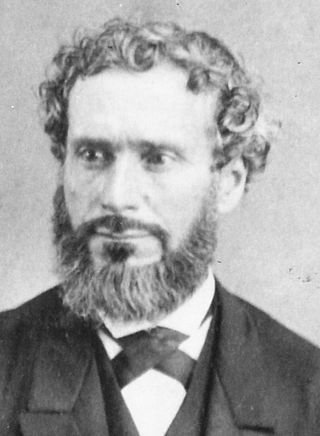
Charles Grafton Page was an American electrical experimenter and inventor, physician, patent examiner, patent advocate, and professor of chemistry.

A timeline of United States inventions (1890–1945) encompasses the innovative advancements of the United States within a historical context, dating from the Progressive Era to the end of World War II, which have been achieved by inventors who are either native-born or naturalized citizens of the United States. Copyright protection secures a person's right to the first-to-invent claim of the original invention in question, highlighted in Article I, Section 8, Clause 8 of the United States Constitution which gives the following enumerated power to the United States Congress:
To promote the Progress of Science and useful Arts, by securing for limited Times to Authors and Inventors the exclusive Right to their respective Writings and Discoveries.

Barrier-grid animation or picket-fence animation is an animation effect created by moving a striped transparent overlay across an interlaced image. The barrier-grid technique originated in the late 1890s, overlapping with the development of parallax stereography (Relièphographie) for 3D autostereograms. The technique has also been used for color-changing pictures, but to a much lesser extent.
Brewster Color was an early subtractive color-model film process.
William Edward Baekey was an American film and television actor.
References
- ↑ Obituary of Elmer Greensfelder, Baltimore Sun, December 20, 1966
- ↑ Donald Kirkley, "Little Theaters Here Cheer By Award Of Drama League", Baltimore Sun, January 31, 1932.
- ↑ Donald Kirkley, "Half Past Heaven Is Presented At Play-Arts Guild", Baltimore Sun, October 29, 1931.
- ↑ Holly, David. "Elmer Greensfelder", in Baltimore in American Literature. Johns Hopkins University, 1933.
- ↑ United States Patent Office, Method and Apparatus For Synchronously Producing Sounds To Accompany Motion Pictures, Elmer Greensfelder, 1254684, 1918. (accessed October 25, 2009)
- ↑ United States Patent Office, Changeable Profile Toys, Elmer Greensfelder, 2755577, 1956. (accessed October 17, 2009)
- ↑ United States Patent Office, Loose Leaf Binder, Elmer Greensfelder, 1525777, 1925. (accessed October 25, 2009)